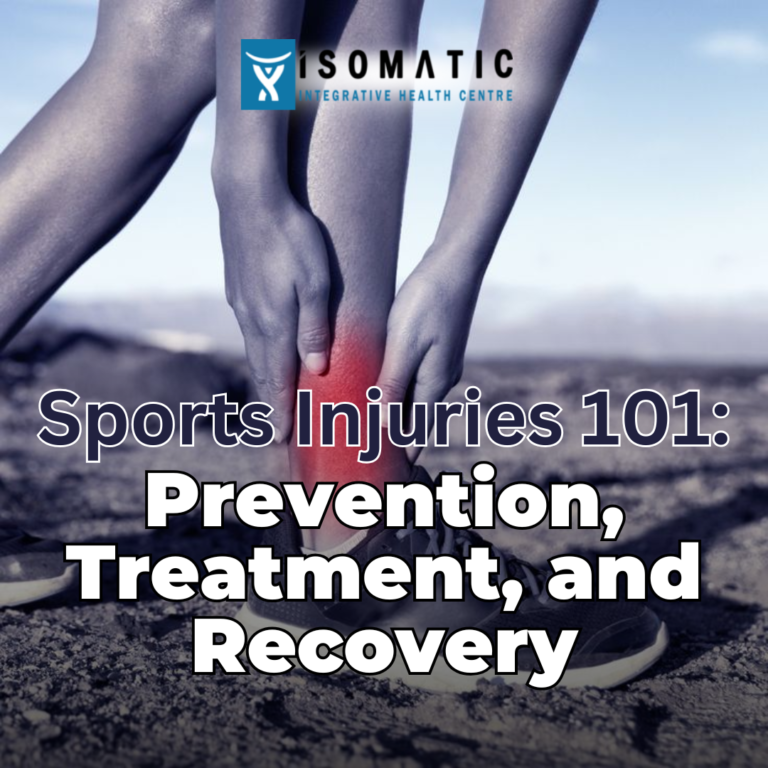
Can Physiotherapy Improve Your Immune System?
Can Physiotherapy Improve Your Immune System? Most people think of physiotherapy as treatment for injuries, pain, or movement limitations—but its benefits extend far beyond rehabilitation.

Sports injuries can sideline even the most seasoned athletes. Whether you’re a weekend warrior or a professional competitor, injuries are an inevitable part of the game. From sprains and strains to fractures and concussions, understanding how to prevent, treat, and recover from sports-related injuries is crucial for maintaining peak performance and long-term health.
Sports injuries occur when physical activities cause damage to muscles, ligaments, tendons, or bones. They range from mild strains to severe fractures and can be classified as acute or chronic injuries.
Sprains occur when ligaments are stretched or torn, while strains affect muscles and tendons. These injuries commonly result from overuse, poor conditioning, or inadequate warm-up.
High-impact sports like football, basketball, and gymnastics pose a higher risk of bone fractures and joint dislocations. These injuries often require immediate medical attention and prolonged recovery periods.
Repetitive motion can lead to conditions like tendinitis (inflammation of a tendon) and stress fractures. Athletes in sports like running, swimming, and tennis are particularly susceptible to overuse injuries.
A blow to the head can result in a concussion, a serious injury that affects brain function. Contact sports like football, boxing, and soccer have a high incidence of concussions. Proper protective gear and adherence to safety protocols are crucial in minimizing risks.
For minor injuries, the R.I.C.E (Rest, Ice, Compression, Elevation) method helps reduce pain and swelling:
Physical therapy aids in recovery by improving strength, flexibility, and range of motion. A professional therapist can tailor exercises to help you regain mobility safely.
Over-the-counter pain relievers like ibuprofen or acetaminophen can help manage pain. For severe injuries, doctors may prescribe stronger medications or recommend alternative treatments like acupuncture or massage therapy.
In cases of severe injuries like torn ligaments (e.g., ACL tears) or compound fractures, surgery may be necessary. Post-surgical rehabilitation is essential for a full recovery and return to activity.
Rushing back into sports too soon can lead to re-injury. Follow a structured rehabilitation plan and get medical clearance before resuming full activity.
Sports injuries can be mentally challenging. Staying positive, setting realistic goals, and practicing visualization techniques can help athletes maintain motivation during recovery.
Engaging in low-impact activities like swimming or cycling allows athletes to maintain fitness while avoiding stress on the injured area.
Regular check-ins with a healthcare provider, listening to your body, and maintaining good training habits can prevent future injuries.
What are the most common sports injuries?
The most common sports injuries include sprains, strains, fractures, tendinitis, and concussions.
How can I prevent sports injuries?
Preventing sports injuries involves proper warm-ups, strength training, using protective gear, and maintaining good technique.
When should I see a doctor for a sports injury?
Seek medical attention if you experience severe pain, swelling, inability to move the affected area, or symptoms of a concussion.
Can I continue training with a minor injury?
It depends on the injury. Some minor injuries allow for modified activity, but ignoring pain can lead to more severe damage.
How long does recovery from a sports injury take?
Recovery time varies based on the severity of the injury. Minor injuries may heal in a few weeks, while severe injuries may take months or require surgery.
Are there alternative treatments for sports injuries?
Yes, treatments like acupuncture, chiropractic care, and massage therapy can aid in pain relief and recovery.
Sports injuries are a reality for athletes at all levels, but they don’t have to end your game. By taking preventive measures, seeking timely treatment, and following a structured recovery plan, you can get back to your sport stronger than ever. Listen to your body, prioritize safety, and always seek professional guidance when needed.

Can Physiotherapy Improve Your Immune System? Most people think of physiotherapy as treatment for injuries, pain, or movement limitations—but its benefits extend far beyond rehabilitation.

Headaches and Tension? Try These Hands-On Osteopathic Solutions Headaches caused by tension can be draining, distracting, and downright frustrating. Whether they come from long hours

Isometric Exercises: Why We Recommend Them in Recovery When you’re healing from an injury, not all exercises are safe—some movements can even set you back.